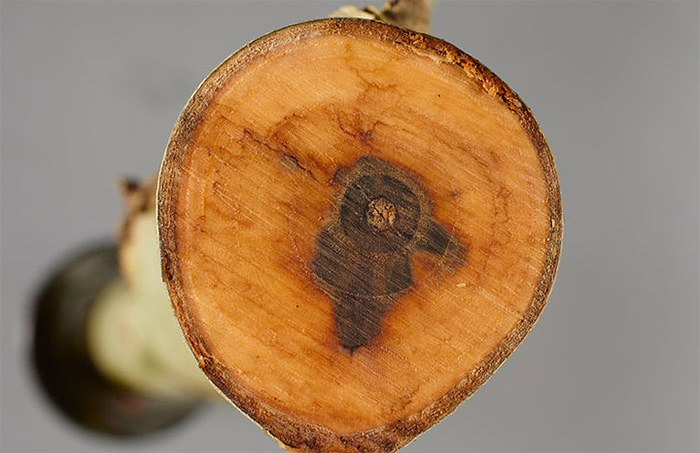
A new fungicide treatment developed at the University of Sussex is emerging as a weapon in the fight to inhibit growth of Chalara fraxinea, which causes ash dieback, according to initial trials at The Sainsbury Laboratory.
AOX fungicides were created in the University of Sussex laboratory of Professor Tony Moore, and have recently been subjected to independent trials in the world-renowned Sainsbury Laboratory in Norwich.
Fungal pathogens are adept at developing resistance to treatments by expressing an enzyme called the alternative oxidase (AOX). The novel compounds formulated by Professor Moore prevent this enzyme from being functional. If developed, these compounds may be effective for longer and need less frequent spraying.
The compounds were particularly effective when combined with a traditional fungicide that targets a different enzyme in the fungus. Professor Moore and his colleagues identified the current target using data made available by The Sainsbury Laboratory on infected tree samples. The data are available for other scientists to analyse on the crowdsourcing website OpenAshDieBack.
Professor Moore hopes that in the future, AOX fungicides could also be used to better protect cereal crops from pathogenic fungi. As well as protecting yields, they could lessen the environmental damage caused by multiple applications. The University of Sussex is currently working with the Sussex Innovation Centre to help bring the compounds to market, and is seeking commercial partners to develop AOX fungicides for a range of applications.
If developed further, the treatment could be used on infected nursery stock or ash plantations that are blighted by the ash dieback disease. It is more problematic to use fungicides in native woodland, where spraying is difficult and fungicides may affect beneficial fungi that help tree nutrition and healthy growth.
Ash dieback has spread rapidly throughout mainland Europe over the past two decades. The fungus was first reported in Britain in early 2012, and current estimates suggest that between 90-99 per cent of the country’s native ash trees could be killed by the disease.
Ian Carter, Director of Research and Enterprise at the University of Sussex, said: “It’s extremely encouraging to see the successful trials of Professor Moore’s innovation that are coming out of The Sainsbury Laboratory. We’re delighted that research at Sussex is producing such promising results and helping to provide solutions to real global problems.”
Dr Diane Saunders, The Sainsbury Laboratory, said: “This first step in testing the new compounds, on the growth of fungus cultured in the laboratory, was promising. If developed, it could help nursery and plantation owners. It would be particularly useful for protecting trees that are susceptible to the pathogen when young, but which might be more tolerant to it when they are mature. Our own research is focused on both ash trees and the fungus, with the long term goal to develop a way to select and breed trees able to withstand the disease for generations to come.”
